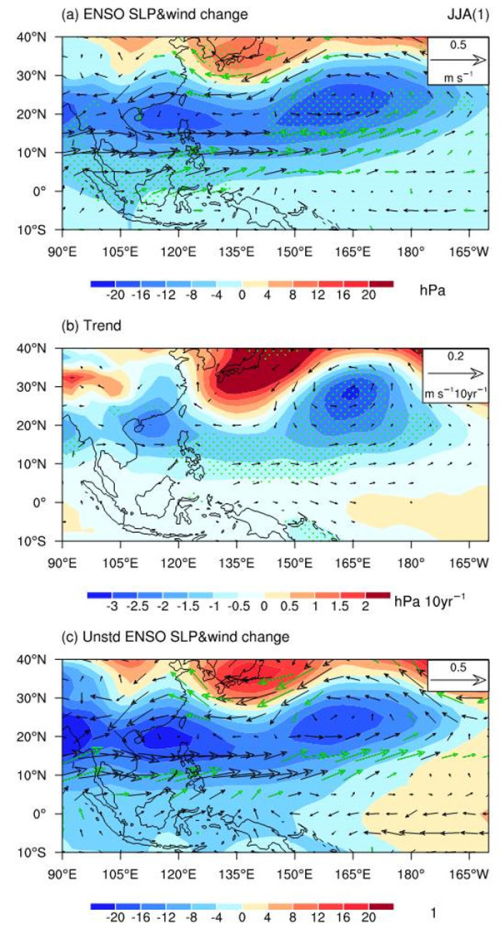The northwest Pacific anticyclone (NWPAC) anomalies during post–El Nino summers are closely associated with the summer climate in East Asia. Understanding how this will change under global warming is crucial to project the changes in the variability of the northwest Pacific summer monsoon.
Recently, Dr. JIANG Wenping, Profs HUANG Gang and HUANG Ping from the Institute of Atmospheric Physics (IAP) of the Chinese Academy of Sciences revealed that the anomalous NWPAC response to El Ni?o will likely be weakened under global warming by using 18 selected coupled models from phase 5 of the Coupled Model Intercomparison Project, which is attributed to the decreased zonal contrast between the tropical Indian Ocean warming and the Northwest Pacific cooling during post–El Ni?o summers. Further, the causes of the decreased zonal contrast were analyzed. This study has been published in Journal of Climate.

(a) Changes in ENSO-induced JJA(1) SLP anomalies and 850-hPa wind anomalies in the RCP8.5 run for the period 2071–2100 relative to those in 1971–2000. The stippled green area indicates the region where the sign of the MME projected change agrees in more than 13 models. (b) Trend of the changes in the ENSO-induced SLP and wind anomalies from 2011–40 to 2071–2100 relative to those in 1971–2000. Green dots and black arrows indicate where the significance exceeds the 95% confidence level. (c) As in (a), but regressed on the D(0)JF(1) unstandardized Nino-3.4 index.
Reference:
Jiang, W., G. Huang, P. Huang*, K. Hu: Weakening of Northwest Pacific anticyclone anomalies during post-El Nino summers under global warming. Journal of Climate, 2018, 31, 3539-3555, DOI:10.1175/JCLI-D-17-0613.1. https://journals.ametsoc.org/doi/full/10.1175/JCLI-D-17-0613.1
